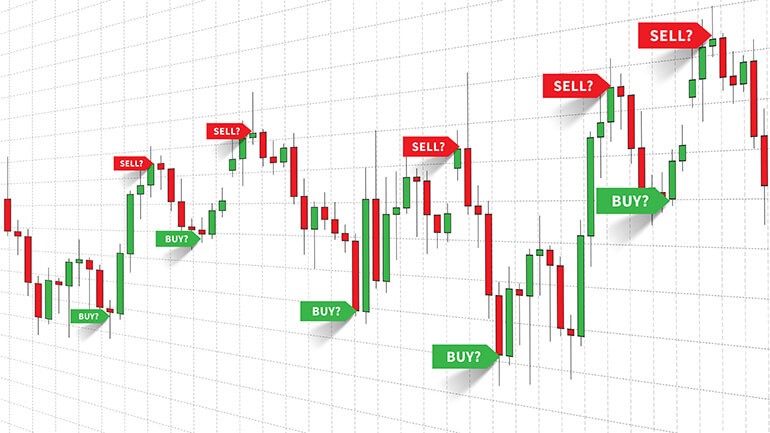
Both forex trading and crypto trading have the potential to be profitable, but it ultimately depends on various factors such as market conditions, trading strategies, accurate crypto trading signals and individual skills. Forex trading involves buying and selling different currencies, while crypto trading involves buying and selling cryptocurrencies. Both markets can be volatile and carry risks.
It's important to note that trading in forex or crypto markets involves a level of uncertainty, and there are no guarantees of making money. Profits and losses can occur, and it's crucial to have a good understanding of the markets, risk management, and trading techniques.
Successful traders in both forex and crypto markets often spend time learning and analyzing market trends, using technical and fundamental analysis, and developing effective trading strategies. It's advisable to educate yourself, practice with virtual accounts, and start with small investments before committing significant funds.
Remember, trading in forex or crypto markets involves risks, and it's essential to make informed decisions and be prepared for potential losses.
So now let's know abut how can start trading?
- To start trading, here are some steps you can follow:
1. Educate yourself: Take the time to learn about the basics of trading, including different markets, trading strategies, risk management, and technical analysis. There are numerous online resources, courses, and books available to help you gain knowledge.
2. Choose a market: Decide which market you want to trade in, such as forex, stocks, commodities, or cryptocurrencies. Research and understand the characteristics, risks, and opportunities of the chosen market.
3. Select a reliable broker: Find a reputable broker that offers access to the market you want to trade in. Look for factors like regulation, fees, trading platform features, customer support, and security.
4. Create a trading plan: Develop a trading plan that outlines your goals, risk tolerance, preferred trading strategies, and money management rules. A well-defined plan can help guide your decisions and minimize emotional trading.
5. Practice with a demo account: Many brokers offer demo accounts that allow you to practice trading with virtual money. Use this opportunity to familiarize yourself with the trading platform, test your strategies, and gain confidence before trading with real money.
6. Start with a small investment: When you feel ready to trade with real money, start with a small amount that you can afford to lose. This will help you gain experience and manage your risk effectively.
7. Continuously learn and adapt: Trading is a continuous learning process. Stay updated with market news, economic events, and trading trends. Analyze your trades, identify areas for improvement, and adapt your strategies accordingly.
Remember, trading involves risks, and there are no guarantees of profits. It's important to approach trading with a disciplined mindset, manage your risk effectively, and be prepared for potential losses.
- To transition trading into a job, here are a few steps you can consider:
1. Education and Knowledge: Start by educating yourself about the financial markets, trading strategies, and risk management. There are numerous online courses, books, and resources available to help you gain a solid understanding of trading principles.
2. Practice and Demo Accounts: Open a demo trading account with a reputable broker to practice your trading strategies without risking real money. This will allow you to gain experience and confidence in executing trades.
3. Develop a Trading Plan: Create a well-defined trading plan that outlines your goals, risk tolerance, preferred trading style, and strategies. A trading plan will help you stay disciplined and focused on your trading objectives.
4. Start Small: Begin with a small amount of capital that you can afford to lose. This will help you manage risk and minimize potential losses during the learning phase.
5. Consistency and Discipline: Treat trading like a job by establishing a routine and sticking to it. Set specific trading hours, conduct market analysis, and follow your trading plan diligently. Consistency and discipline are key to long-term success.
6. Continuous Learning: Stay updated with market news, economic indicators, and new trading techniques. Attend webinars, read books, and follow reputable trading blogs to enhance your knowledge and skills.
7. Risk Management: Implement effective risk management strategies to protect your capital. This includes setting stop-loss orders, diversifying your trades, and not risking too much of your capital on a single trade.
8. Evaluate and Adapt: Regularly review your trading performance, analyze your trades, and identify areas for improvement. Adapt your strategies based on your strengths and weaknesses to enhance your trading results.
Remember, trading can be challenging and requires dedication, patience, and continuous learning. It's important to approach it with a long-term perspective and manage your expectations accordingly.
- forex or crypto?
- The choice between forex trading and crypto trading depends on your personal preferences, risk tolerance, and investment goals. Here are some key points to consider:
- Forex trading:
- Forex trading involves buying and selling different currencies.
- It is the largest and most liquid market globally, with high trading volumes.
- Forex markets are influenced by various factors such as economic indicators, geopolitical events, and central bank policies.
- It offers a wide range of currency pairs to trade, providing opportunities for diversification.
- Forex trading typically involves lower volatility compared to crypto markets.Crypto trading:
- Crypto trading involves buying and selling cryptocurrencies like Bitcoin, Ethereum, or Litecoin.
- Crypto markets are known for their high volatility, which can present both opportunities and risks.
- The crypto market operates 24/7, allowing for trading at any time.
- It is a relatively new and rapidly evolving market, with potential for significant price movements.
- Crypto trading often attracts individuals interested in the technology and potential long-term growth of cryptocurrencies.Ultimately, the decision between forex and crypto trading depends on your knowledge, experience, risk appetite, and investment goals. It may be beneficial to research and understand both markets before making a decision.
How to provide best accurate trading signals?
- Providing accurate trading signals requires a combination of technical analysis, fundamental analysis, and market expertise. Here are some factors to consider when aiming to provide accurate trading signals:
1. Technical analysis: This involves analyzing price charts, patterns, indicators, and other technical tools to identify potential entry and exit points. Understanding technical analysis techniques and using them effectively can help in generating accurate trading signals.
2. Fundamental analysis: Keeping track of relevant news, economic indicators, and market events can provide insights into the underlying factors that may impact the market. Fundamental analysis helps in understanding the broader market context and can contribute to accurate trading signals.
3. Market expertise: Developing a deep understanding of the specific market you are trading in is crucial. This includes studying historical price movements, market trends, and the behavior of various market participants. Experience and knowledge of the market can enhance the accuracy of trading signals.
4. Risk management: Implementing proper risk management techniques is essential for accurate trading signals. This involves setting appropriate stop-loss levels, determining position sizes, and managing overall portfolio risk. Effective risk management helps to minimize losses and protect capital.
5. Continuous learning and adaptation: Markets are dynamic, and staying updated with market trends, new trading strategies, and evolving market conditions is important. Continuously learning and adapting your trading approach based on new information can improve the accuracy of trading signals.
It's worth noting that no trading signal can guarantee success, as trading involves inherent risks. It's important to thoroughly evaluate any trading signals and consider them in the context of your own analysis and risk tolerance.
6. Historical performance analysis: Evaluating the past performance of trading signals can provide insights into their effectiveness and accuracy. Analyzing historical trades, including their success rate, average profit/loss, and drawdowns, can help identify patterns and assess the reliability of the signals.
7. Backtesting: Backtesting involves applying trading signals to historical market data to evaluate their performance. By simulating trades and measuring their profitability, backtesting can help validate the accuracy of trading signals and identify potential shortcomings or biases.
8. Sentiment analysis: Understanding the sentiment of market participants can be crucial in generating accurate trading signals. Monitoring social media, news sentiment, and market sentiment indicators can provide insights into the overall mood and expectations of traders, which can influence market movements.
9. Technical indicators and oscillators: Utilizing a wide range of technical indicators and oscillators can enhance the accuracy of trading signals. These tools can help identify trends, market reversals, overbought or oversold conditions, and other important patterns that can guide trading decisions.
10. Timeframe analysis: Different timeframes can provide different perspectives on market trends and price movements. Analyzing multiple timeframes, such as daily, weekly, and monthly, can help confirm trading signals and provide a more comprehensive understanding of the market dynamics.
11. Risk-reward ratio: Assessing the potential reward in relation to the risk involved in a trade is crucial for accurate trading signals. A favorable risk-reward ratio ensures that potential profits outweigh potential losses, increasing the likelihood of successful trades.
12. Trade management: Monitoring and managing trades in real-time is essential for accurate trading signals. This includes adjusting stop-loss levels, trailing stops, and taking profits at appropriate levels based on market conditions and price action.
13. Psychological factors: Recognizing and managing emotions such as fear, greed, and impatience is crucial for accurate trading signals. Emotionally-driven decisions can lead to costly mistakes, so maintaining discipline and objectivity is important for generating reliable signals.
14. Trade journaling and analysis: Keeping a detailed record of trades, including the rationale behind each decision and the outcome, can help identify patterns and improve the accuracy of trading signals over time. Regularly reviewing and analyzing past trades can provide valuable insights into strengths and weaknesses in your trading strategy.
15. Collaboration and mentorship: Engaging with other traders, participating in trading communities, and seeking mentorship from experienced traders can provide valuable feedback and insights that can enhance the accuracy of trading signals. Learning from others' experiences can help avoid common pitfalls and improve trading performance.
In summary, providing accurate trading signals requires a comprehensive approach that combines technical and fundamental analysis, market expertise, risk management, continuous learning, and adaptation. Considering these factors and taking a systematic approach to generating and evaluating trading signals can increase the likelihood of successful trading. However, it's important to remember that no signal is foolproof, and personal analysis and risk tolerance should always be considered.






















